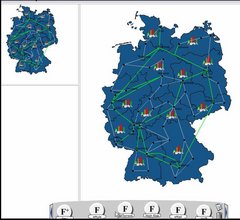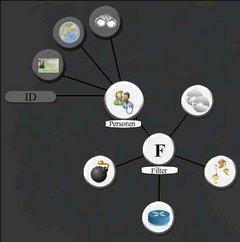Bundestrojaner
Bundestrojaner – Interface design using the example of network monitoring software

A very discussed topic of the press was online searching of computers. The software that is necessary for that is called “Bundestrojaner”. It is a software that is able to search and read data of computers in an unnoticed way. Politicians like Mr. Schäuble wanted to enforce a software like this for law enforcement agencies. The goal of the software was to avoid planned crimes, especially crimes that have a terroristic background. Privacy groups claimed that the software could also be used for petty crimes like copyright protection crimes. There was no concrete information about the functions of such a software by the time of the project performance. In the context of our lecture, a group of students aimed at designing a user interface for a monitoring software.
Goal
The focus was based on the development of a filter to demonstrate the big amount of data clearly and in real time. The students analysed conventional network monitoring software and based on that they could develop a new service and filter concept. The goal of the project was the simplification of existing expert systems and the efficient and intuitive illustration of results and search requests. It was also required that laypeople could understand the service and illustration concept.
Description of a solution

The students developed a concept for the visualization of the “Bundestrojaner” as a first step for the solution of their task. This step resulted in two basic concepts:
The main menu of the program included a map of Germany. The combination of a minimap and usual best practices like zooming and scrolling tools contributed to an efficient navigation through the program.
Another central area of the program was the creation of a filter. With the use of a mind map technique, it was possible to design groups of similar areas and to retrieve these areas. Specific design rules were considered for this creation. The completed filter systems can be used to filter big amounts of data and to provide clear information in the main menu of the program.
Project members
- Alexander Glück
- Benjamin Kersten
- Jan Scheele
- Tim Oberföll
